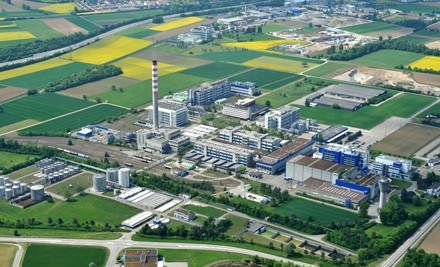Accidents in the
production lines of vitamin A are continuing, adding more pressure on an
already tight market supply. The price will remain high in the next months due
to supply shortage.

After
the fire at BASF in late October 2017, a pipeline pump explosion accident
occurred on January 10, 2018, at the factory of DSM in Sisseln, Switzerland. The
company is the worldwide leading producer of vitamin A, besides producing other
vitamins and minerals. The explosion was affecting the vitamin A production
lines, which caused the company to suspended vitamin A production and the
purchase of raw materials.
As
a result of the accident, the quotation for customers soared in Europe,
hitting EUR390,000/t–EUR450,000/t. The explosion has a significant effect on
the worldwide vitamin A market, as DSM determines the global price of vitamin A
to a large extent. For example, when the company announced its plan in last October to suspend production six to eight weeks
for an upgrade in the Swiss factory, prices have surged as a result.
According
to market intelligence firm CCM, the accident will greatly reduce the global
vitamin A supply in the first quarter of 2018. Affected by the fire accident of
BASF in Oct. 2017, the supply of VA can be resumed six to twelve weeks after
March 2018, when BASF can resume supply of citral. Bluestar Adisseo
subsequently announced its reduction in vitamin A production in its France
factory, adding that normal production is scheduled to recover in this April.
China’s producers Zhejiang Medicine and Xiamen Kingdomway have also witnessed
their vitamin A production decrease for insufficient citral supply.
The
global Vitamin A market was already tight before the fire. Vitamin A output in
China was significantly disrupted during the summer as a result of inspections
relating to environmental issues and new regulations.
China’s vitamin A
market
In
December 2017, China’s domestic vitamin A producers raised quotations, which
caused the ex-works price to hit a six-year peak in the country. After the
BASF accident occurred, domestic producers suspended providing quotations while
traders suspended supplying goods.
Nearly
80% of vitamin A is used as feed additives. Therefore, the demand from the feed
industry is influencing the market price decisively.
In
2018, the policy of Live Pig Raising Ban in Specific Areas will get loose,
according to CCM's research. Some large-scale enterprises released their plans in late
2017. Specifically, Beijing Dabeinong. invested several hundred million in the
sector of pig-raising in early December. New Hope Liuhe disclosed last month
its target of 3.50 million heads of live pigs in 2018 and 18 million in 2021.
Shenzhen Kingsino also said that it would strive to supply 2 million heads of
live pigs per year in the coming three years. In this context, the demand for
feed is expected to rise, and further contribute to the rise in vitamin A price.
The vitamin A
industry has a high technological requirement for players. Currently, there are
only six main producers around the globe, including DSM, BASF, Bluestar Adisseo,
Zhejiang NHU, Zhejiang Medicine and Kingdomway. CCM expects domestic vitamin A price
will remain high in Q1 2018 as the supply tightens worldwide.
BASF fire limits
production until Q3 2018
German
vitamin giant BASF is not likely to continue to supply vitamin A and vitamin E
until the end of Q2 2018 to the beginning of Q3 2018, given that the production
can be resumed only after the normal production of citral, which was predicted
to be in March 2018.
Affected
by this, Bluestar Adisseo, which produces vitamin A using BASF's citral,
announced on 22 November that its factory a 19% vitamin A capacity of the world's
total in France had cut production, and normal production was predicted to be
resumed until April 2018.
A
fire occurred at BASF's citral factory in Ludwigshafen, Germany on 31 October
2017. BASF is the world's largest citral supplier, and its vitamin A and
vitamin E capacity account for nearly 26% and 17% of the global total. In Q1
2018, about 45% of the global vitamin A capacity will see production suspension.
The
company said it will not be able to restart before March the citral plant at
its Ludwigshafen headquarters that was damaged by a fire and that shipments of
downstream vitamin products would resume six to 12 weeks after the start-up of
production.
About the article
The
information for this article comes from CCM, China’s leading market
intelligence provider for the fields of agriculture, chemicals, food and feed.
Get
insights into China’s vitamins and minerals market by subscribing to our monthly newsletter. This publication provides readers with all newsworthy
stories of China’s vitamins market, including company dynamics, policy changes,
import and export trends as well as technological updates.
Join
the discussion and your industry peers in our LinkedIn group and Facebook group.
Follow us on Twitter: @CCM_Kcomber